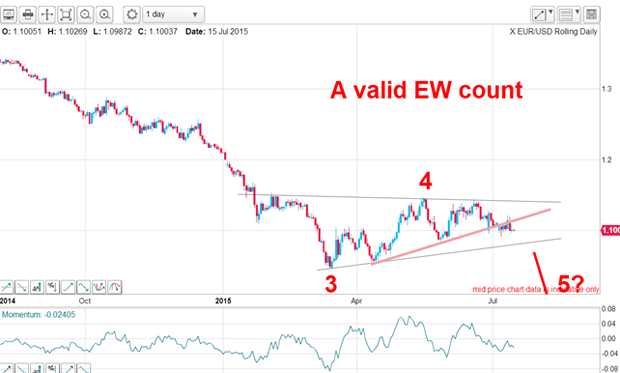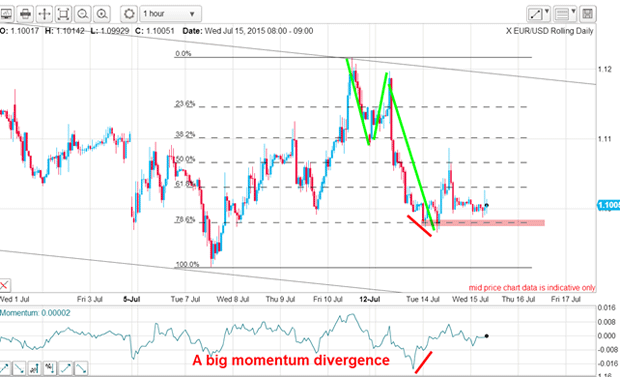The eurozone panto reaches a climax
The drama over Greece's bailout is hotting up. John C Burford looks at what effect this is having on the euro.
The players in the eurozone pantomime are certainly getting their knickers in a twist now. No sooner had the Germans handed Greece a non-negotiable ticket to the loan lottery (with absolutely no debt forgiveness) than the International Monetary Fund (IMF) entered stage left with demands that Greece be given massive debt relief!
It now appears Frau Merkel will be squaring off against Madame Lagarde. And what a bout that will be.
Maybe the phoney extend and pretend' deal of last weekend has finally met its match.
Subscribe to MoneyWeek
Subscribe to MoneyWeek today and get your first six magazine issues absolutely FREE

Sign up to Money Morning
Don't miss the latest investment and personal finances news, market analysis, plus money-saving tips with our free twice-daily newsletter
Don't miss the latest investment and personal finances news, market analysis, plus money-saving tips with our free twice-daily newsletter
Maybe the negotiators have finally acknowledged economic reality.
Maybe the fantasy that bankruptcy can be solved with yet more unpayable debt has at last been seen for what it is. After all, that same medicine has been prescribed many times before with the result that Greece has sunk even deeper into economic depression.
I have long held the view that there is no crisis that politicians cannot make worse. The bigger the crisis, the heavier their clunking fist and the greater the damage.
In any event, markets are taking all of this pretty calmly with the Dax up sharply this week. Today I want to look at the euro, which has remained surprisingly calm this week. This is the daily chart:

The wave 3 low was made in March at the 1.05 area just when there was a solid consensus that it would soon plunge below parity. As I mentioned at the time, I believed parity would be delayed by a counter-trend rally. Indeed, there was a rally to the May high in an A-B-C form. That high can be labelled wave 4.
Following that rally, the market declined, rallied and is now in decline mode again. It has broken the pink lower line of a wedge pattern and is heading towards my lower black line, drawn off the two major lows of 13 March and 13 April. That line now becomes a likely target.
But this market is full of surprises and before we jump to firm conclusions, let's zoom in on the hourly chart. I have drawn in my best fit tramlines for the June-July period. They are not textbook, but that is what the market is giving me. This morning, the market is trying to base around the 1.10 level.

In close-up, we can see that the latest decline off the upper tramline is a clear A-B-C (in green) and has taken the market right to the Fibonacci 78% support area. But note the extremely large positive-momentum divergence at the low. That heralded a sharp upward reversal, which occurred on Friday.
This morning, we're seeing a re-test of the 78% level. If that support holds, it should lead to an even larger rally perhaps up to the upper tramline.

If the Fibonacci 78% support gives way soon, a re-test of the lower tramline beckons. And that would set up the likelihood of a test of the lower wedge line shown on the daily chart. That would bring the day when EUR/USD reaches parity that much closer if it ever happens.
What would Grexit mean for the euro?
Surely the exit of those weakest links would help strengthen the currency, since only the strongest economies would remain and they would continue to benefit from its many advantages. I have long held the belief that with a eurozone breakup, the euro would not itself break up, but rise in value.
Perhaps keeping those weak links in the eurozone would be a source of downward pressure on the euro. With the political panto in full swing, who is brave enough to forecast the outcome?
Get the latest financial news, insights and expert analysis from our award-winning MoneyWeek team, to help you understand what really matters when it comes to your finances.
John is is a British-born lapsed PhD physicist, who previously worked for Nasa on the Mars exploration team. He is a former commodity trading advisor with the US Commodities Futures Trading Commission, and worked in a boutique futures house in California in the 1980s.
He was a partner in one of the first futures newsletter advisory services, based in Washington DC, specialising in pork bellies and currencies. John is primarily a chart-reading trader, having cut his trading teeth in the days before PCs.
As well as his work in the financial world, he has launched, run and sold several 'real' businesses producing 'real' products.
-
 Government launches full review of parental leave and pay – what could it mean for you?
Government launches full review of parental leave and pay – what could it mean for you?The government wants parental leave to be fairer - will its shake-up fix the widespread problem for families?
-
 Nationwide: House prices see biggest monthly fall in over two years
Nationwide: House prices see biggest monthly fall in over two yearsUK house prices dropped by 0.8% in June, according to Nationwide. We reveal the top-performing and worst-performing regions